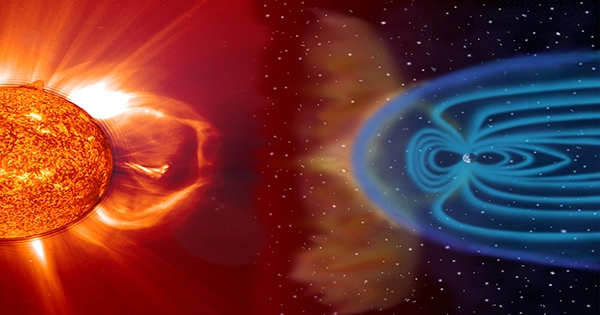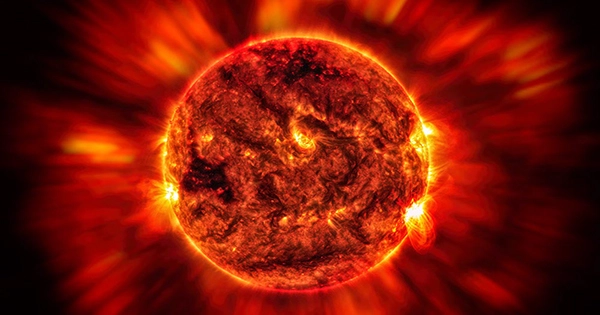One of the 60 sunspots currently visible on the Sun’s surface has been extremely active this week. Two solar flares have been emitted by spot AR2929, followed by coronal mass ejections. Fortunately, they were photographed by NASA’s Solar Dynamics Observatory, which is continually watching the Sun.
The first flare, which was categorized as an M1.5, burst on January 18, while the second flare, which was classified as an M5.5, occurred on January 20. These flares are classified as small and moderate flares, respectively, yet they are nevertheless massive outpouring of energy from our star. Because of the events, the Sun’s X-rays increased, causing a tiny but brief short-wave radio blackout over South America and the Indian Ocean.

Coronal mass ejections — massive discharges of plasma and magnetic field ejected from the Sun’s corona — and coronal mass ejections — both of which were stunning, but far from the finest we have seen — demonstrated the flares’ power. These occurrences cause waves in the solar wind, which, when tossed in our direction, can alter our planet’s space weather, including the appearance of spectacular aurorae.
There appears to be no chance of seeing auroras in lower latitudes, but forecasts predict a moderate increase in activity on the night of Saturday, January 22, and Sunday, January 23. Observations of activities like this help us better understand the Sun and prepare for the most severe and powerful space weather events it may produce.
These are our own gauges, which are refreshed every 60 seconds using data from Nasa’s ACE spacecraft. The data you see here only a few moments ago was monitored by the ACE spacecraft. The three most essential components of the solar wind are these three (when it comes to Aurora Borealis). It is worth noting that the Bz gauge works backwards. On our other solar wind tool, you may see all of the solar wind components.
CMEs (coronal mass ejections) are enormous plasma and magnetic field expulsions from the Sun’s corona. They have the ability to eject billions of tons of coronal material and carry an imbedded magnetic field (frozen in flux) that is stronger than the interplanetary magnetic field (IMF) intensity in the solar wind.
CMEs travel at rates ranging from less than 250 kilometers per second (km/s) to about 3000 km/s as they leave the Sun. CMEs aimed at Earth can reach our planet in as little as 15-18 hours. The arrival of slower CMEs can take several days. As they travel away from the Sun, they grow in size, and larger CMEs can cover roughly a fifth of the distance between Earth and the Sun by the time they reach our planet.















